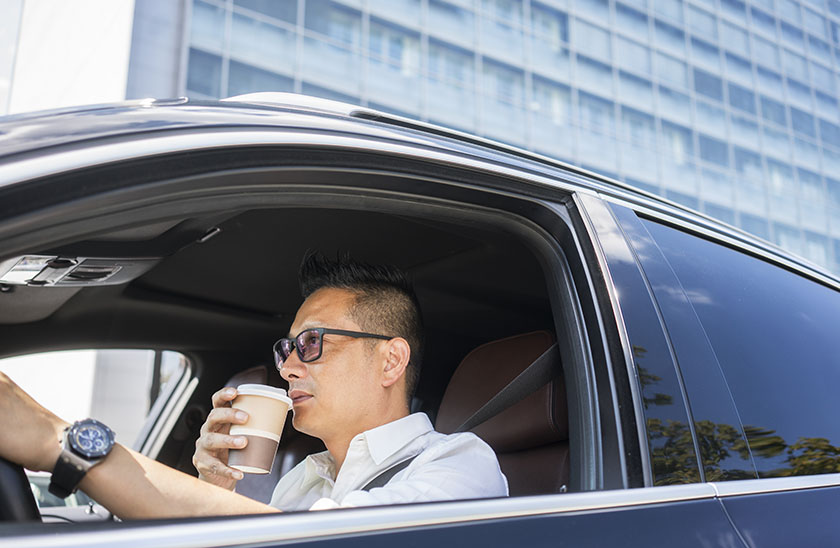Retail marketers, improve the customer experience with mobility data

Key takeaways
- Footfall data v. mobility data: Footfall data only shows store visits, not customer routines or intent.
- Mobility data goes further: Reveals where, when, and how often people travel, enabling routine-based engagement.
- Engage earlier in the customer journey: Target customers before they start driving, based on patterns like commutes or road trips.
- Predict needs, personalize offers:
- Post-work commute → Promote takeout or groceries.
- Weekend morning drive → Highlight food and beverage deals.
- Long highway trips → Offer fuel and snack bundles.
- Focus on key driving moments: Morning commute, school pickup, workouts, weekend drives — make your brand part of their routine.
- Why it matters: Mobility data enables ongoing, localized, and actionable connections, turning loyalty programs into proactive engagement strategies.
Introduction
Today’s best marketers understand that cultivating customer loyalty means anticipating customer needs, every mile of the way.
Retail marketers with brick-and-mortar locations sometimes turn to footfall data to understand consumer behavior. Footfall data measures the number of people entering or passing by a specific location – typically collected via sensors, cameras, or Wi-Fi tracking in and around retail stores. However, this kind of data is limited; it only captures movement in and around the store and neglects to capture customers’ routines.
Mobility data takes this data further. Collected with permission through consumer mobile apps, anonymized and aggregated mobility data reveals where people go, when they go to those places, and how often. By analyzing this data, marketers can identify routines—like daily commutes, gym visits, or weekend shopping trips—and use those patterns to engage customers at the right time and place.
When you understand how your customers move, you can start to understand how to get them to return again and again.
So, what would a routine-based loyalty program look like?
Engage customers earlier
Knowing when and where your customers made a purchase is good. Knowing when and where they go throughout the day is better. Instead of reacting when someone is already nearby, engage them earlier in their journey—when you can still influence their choices.
Fred Dimesa, Head of Product, Marketing Solutions at Arity says, “We work with fuel companies to help them understand patterns that impact demand in market areas they’re interested in. We can provide accurate volumes of traffic, what times of day that traffic surges, the direction of travel, where is that traffic coming from just before they arrive, and where does that traffic originates at the start of the day?”
When you know what your customers’ driving patterns are, then you can reach them before they even start the car. Imagine targeting your customers before they typically head to the gym to promote healthy snack offers at a c-store or promoting food and beverage offers when your customers tend to take road trips.
Rather than wait for footfall data, use the power of driving data to understand and ultimately predict where your customers go.
Predict consumer needs
Go beyond generic time-of-day targeting. Once you understand where your customers tend to encounter your locations, you can begin to interpolate why (see below).
If you understand why your customers are interested in you, you can begin to predict their specific needs. Then you can translate those needs into highly relevant and personalized offers – rather than only A/B testing offers and seeing what sticks.
How driving data can help retail brands better understand customers
Post-work commute
- Likely frame of mind: Tired, hungry
- Opportunity: Offer discounts on takeout or groceries
Weekend morning drive
- Likely frame of mind: Relaxed
- Opportunity: Promote food and beverage offers
Long highway trips
- Likely frame of mind: Bored, hungry
- Opportunity: Promote gas or food and beverage offers
Focus on key moments again and again
Make your brand a seamless part of their day, not a detour.
“People don’t really drive as much as we think they do,” says Dimesa. “And they’re also not driving on the highways, they’re driving on local streets.” If customers tend to be nearby more often than we assume they are, then mobility data gives you the insights that help you reach them – continuously.
Tailor offers based on key moments: their morning commute, their afternoon school pickup, their post-workout commute, their weekend morning drive, their road trips. As Dimesa says, “It’s taking something that traditionally has been the purview of pure brand – pure upper-funnel advertising – and making it much more localized and much more actionable.”
Footfall data, location data, mobility data – they all tell you where your customers are. However, only mobility data can provide the ongoing connection you need to understand not just when customers are in your store but where they are throughout the day.
When you understand your customers’ routines, you can truly engage with them every mile of the way.